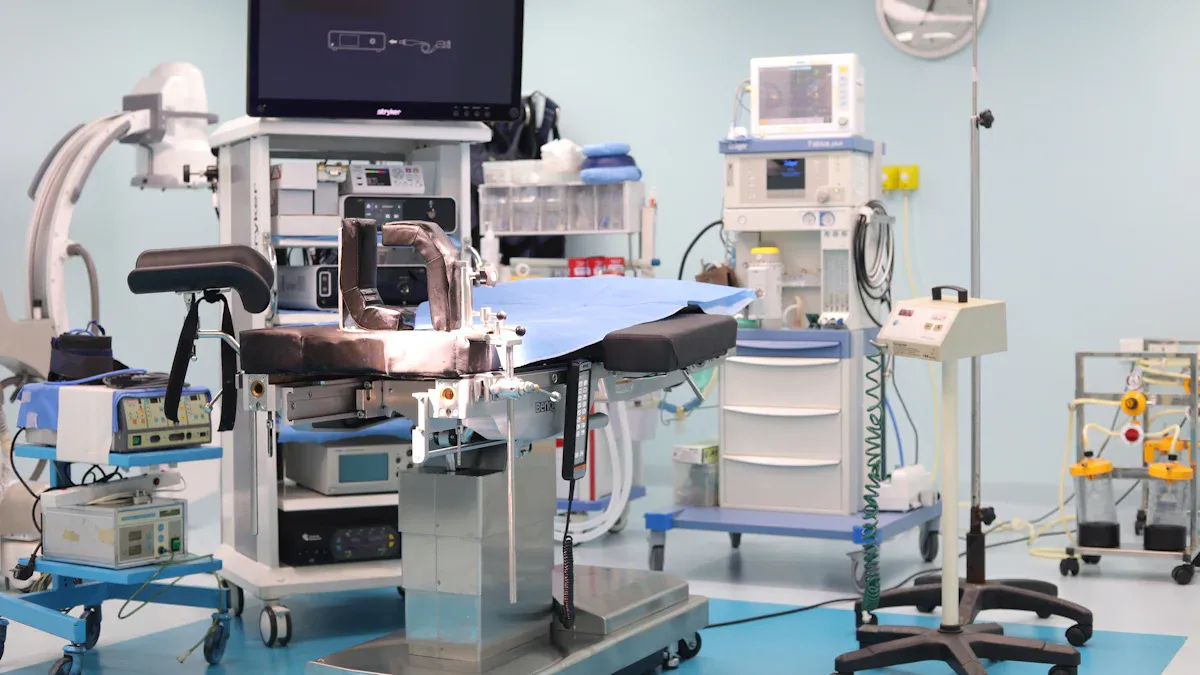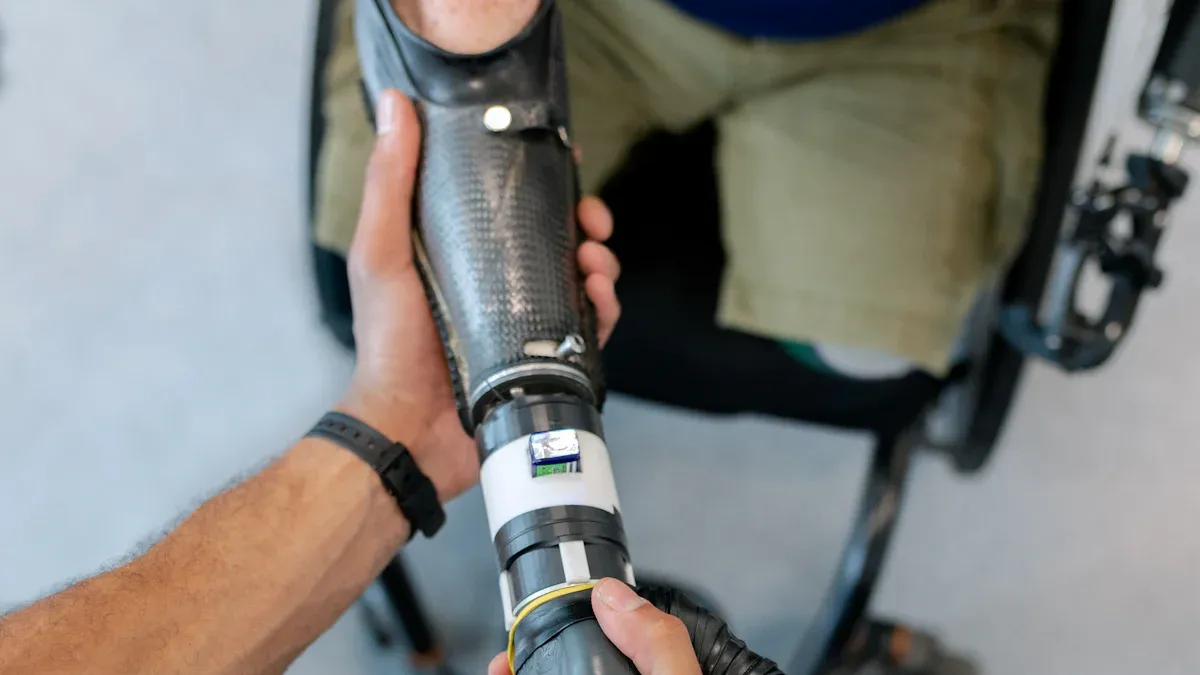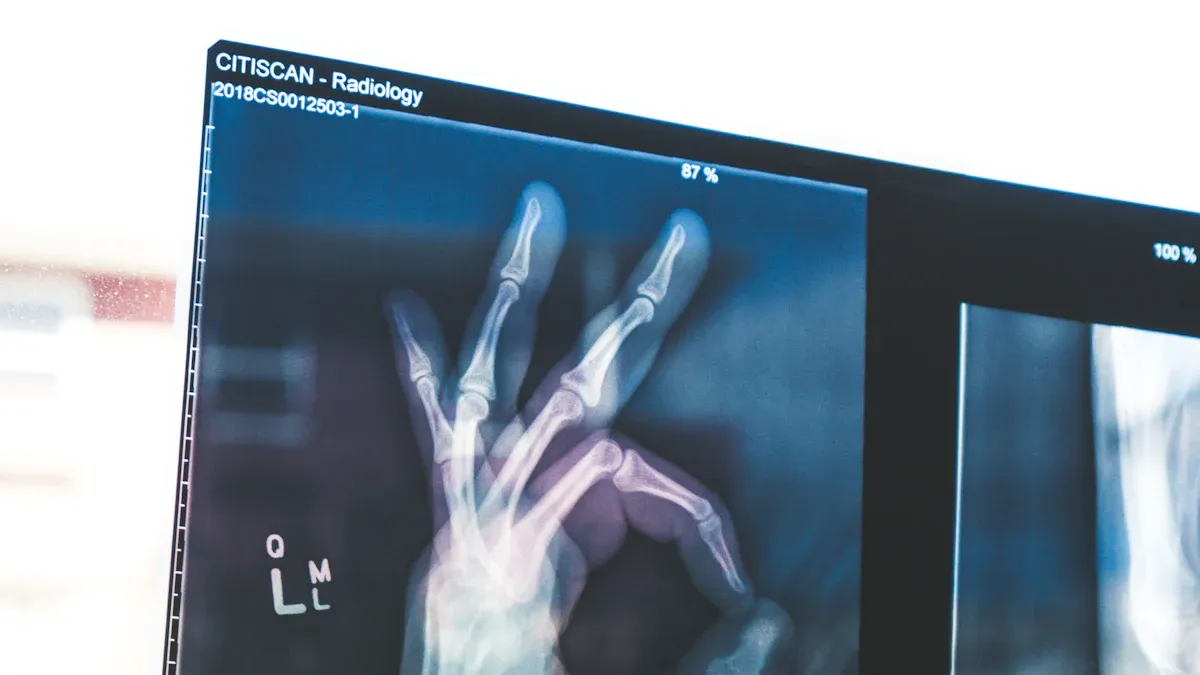How Nitinol Tubing is Revolutionizing Medical Devices

Nitinol tubing has emerged as a game-changer in the field of medical devices. Its unique properties, such as shape memory and superelasticity, have enabled groundbreaking advancements in minimally invasive procedures. This material offers exceptional flexibility and strength, making it indispensable for life-saving applications like stents and guidewires. Studies highlight its role in improving patient outcomes by reducing risks and complications during procedures. The global nitinol medical devices market reflects this impact, with projections estimating growth from USD 20.4 billion in 2024 to USD 35.8 billion by 2033, driven by its increasing adoption in healthcare innovations.
Key Takeaways
Nitinol tubing has special traits like shape memory and flexibility.
These traits make it perfect for use in medical tools.
It helps with less invasive surgeries, allowing quicker healing and comfort.
Nitinol is safe for the body and lowers bad reactions.
Tools like stents and guidewires made from nitinol bend easily and last long.
Unique Properties of Nitinol Tubing

Shape Memory
How shape memory enhances medical device functionality
Nitinol's shape memory property allows it to return to its original form after deformation when exposed to specific temperatures. This unique behavior stems from a phase transformation between its austenite and martensite crystal structures. In medical applications, this characteristic ensures that devices like stents and catheters can adapt to the body's anatomy during insertion and then regain their intended shape for optimal functionality. This adaptability reduces the need for complex surgical adjustments, enhancing procedural efficiency and patient safety.
Examples of shape memory in stents and catheters
The shape memory effect is particularly valuable in self-expanding stents. These stents can be compressed for insertion into narrow blood vessels and then expand to restore blood flow once positioned. Similarly, nitinol-based catheters leverage this property to navigate intricate pathways within the body. For instance, AccuPath's advanced catheters utilize nitinol tubing to achieve precise placement and reliable performance, revolutionizing minimally invasive procedures.
Superelasticity
Benefits of superelasticity in minimally invasive procedures
Nitinol's superelasticity enables it to withstand significant strain without permanent deformation. This property is critical in minimally invasive procedures, where devices must bend and flex through tight spaces without losing their structural integrity. For example, nitinol guidewires can navigate complex vascular systems with ease, reducing patient discomfort and procedural risks.
Comparison with traditional materials in medical devices
Compared to traditional materials, nitinol offers unparalleled flexibility and resilience. While conventional metals may kink or break under stress, nitinol maintains its shape and functionality. A comparative analysis highlights its superiority:
Property | Nitinol | Other Materials |
|---|---|---|
Elasticity | Exceptional elasticity | Limited flexibility |
Superelasticity | Withstands significant strain | Limited strain capacity |
Flexibility | Highly flexible without kinking | Often rigid or less flexible |
This combination of properties makes nitinol the preferred choice for applications requiring precision and durability.
Biocompatibility and Durability
Importance of biocompatibility in healthcare applications
Biocompatibility is a critical factor in medical device design. Nitinol's high compatibility with human tissue minimizes the risk of adverse reactions, making it ideal for long-term implants. Its use in cardiovascular devices, such as stents, ensures safe and effective interaction with the body.
Long-term performance and corrosion resistance
Nitinol's durability and resistance to corrosion further enhance its appeal. Research confirms that nitinol implants maintain their structural integrity over time, even under repeated stress. This reliability reduces the likelihood of device failure, ensuring consistent performance in demanding medical environments. These attributes make nitinol tubing a cornerstone of modern healthcare innovation.
Applications of Nitinol Tubing in Medical Devices

Stents
Self-expanding stents for cardiovascular treatments
Nitinol tubing plays a pivotal role in the development of self-expanding stents, which are widely used in cardiovascular treatments. These stents utilize nitinol's shape memory and superelasticity to adapt to the body's anatomy. When compressed for insertion, they expand automatically upon reaching the target site, ensuring precise placement. This innovation has transformed cardiac ablation solutions by reducing the need for invasive surgeries and improving procedural success rates.
Role of Nitinol tubing in restoring blood flow
The ability of nitinol tubing to restore blood flow in blocked or narrowed arteries has made it indispensable in heart devices. Its flexibility and durability allow stents to conform to the natural contours of blood vessels, minimizing the risk of vessel damage. This adaptability enhances long-term patient outcomes, making nitinol a preferred material for life-saving devices in cardiovascular care.
Guidewires and Catheters
Enhanced flexibility and precision in minimally invasive procedures
Guidewires and catheters made from nitinol tubing offer unmatched flexibility and precision. These devices navigate complex anatomical pathways with ease, reducing patient trauma during minimally invasive procedures. Nitinol's superelasticity ensures that guidewires maintain their structural integrity even under significant strain. As one expert noted, "It’s not only more compliant and flexible than stainless steel but it can be deformed to a much greater extent without plastic deformation." This makes nitinol tubing ideal for guiding catheters in cardiac ablation solutions.
AccuPath products and their impact on healthcare innovation
AccuPath has leveraged nitinol tubing to create advanced guidewires and catheters that set new standards in healthcare innovation. These products demonstrate superior fatigue resistance and high-cycle durability, ensuring reliable performance in demanding medical environments. Comparative studies highlight how AccuPath's nitinol-enabled designs outperform traditional materials, particularly in applications requiring high flexibility and precision.
Orthopedic Devices
Nitinol tubing in bone fixation and joint repair
In orthopedic applications, nitinol tubing has revolutionized bone fixation and joint repair. Its shape memory property allows devices to adapt to the body's movements, providing stable support during the healing process. This adaptability has made nitinol a cornerstone in cardiac ablation solutions and other advanced surgical procedures.
Advantages over traditional orthopedic materials
Nitinol offers several advantages over traditional orthopedic materials like stainless steel or titanium. Its biocompatibility and corrosion resistance ensure long-term performance, while its superelasticity reduces the risk of device failure. These attributes make nitinol tubing a superior choice for orthopedic implants, enhancing patient recovery and overall treatment outcomes.
Emerging Applications
Nitinol in robotic-assisted surgeries
Robotic-assisted surgeries represent a cutting-edge advancement in modern medicine. Nitinol tubing plays a crucial role in these systems by enhancing the precision and flexibility of robotic instruments. Its superelasticity allows surgical tools to navigate complex anatomical structures without compromising their integrity. This property ensures that robotic arms can perform intricate movements with minimal risk of device failure.
The biocompatibility of nitinol further supports its use in robotic-assisted procedures. Instruments made from nitinol tubing interact safely with human tissue, reducing the likelihood of adverse reactions. Additionally, its fatigue resistance ensures that these tools can endure repeated use without losing performance. These characteristics make nitinol an indispensable material for robotic systems designed for minimally invasive surgeries.
Use in advanced surgical instruments
Nitinol tubing has also revolutionized the design of advanced surgical instruments. Its unique combination of elasticity and durability enables the creation of tools that adapt to the demands of complex procedures. For example, nitinol-based endoscopic components provide surgeons with enhanced control and precision, improving patient outcomes.
The growing demand for minimally invasive techniques has driven the adoption of nitinol in surgical instruments. Customizable designs allow manufacturers to tailor devices to match patient anatomy, further enhancing their effectiveness. A closer look at its properties highlights why nitinol is preferred:
Characteristic | Description |
|---|---|
Biocompatibility | Nitinol's compatibility with tissue reduces adverse reactions. |
Elasticity | Its elasticity enhances the performance of medical devices. |
Fatigue Resistance | Nitinol can endure repeated deformation cycles, ensuring durability. |
Application Areas | Used in stents, endoscopic components, and orthopedics for patient safety. |
Market Demand | Growing demand for minimally invasive techniques drives adoption. |
These attributes position nitinol tubing as a cornerstone in the development of advanced surgical tools, ensuring reliability and safety in critical healthcare applications.
Advantages of Nitinol Tubing in Medical Devices
Supporting Minimally Invasive Procedures
Reduced recovery time and improved patient comfort
Nitinol tubing has transformed the medical device industry by enabling less invasive procedures that prioritize patient comfort. Its flexibility allows devices to navigate complex anatomical pathways with minimal disruption to surrounding tissues. This reduces trauma during procedures, leading to faster recovery times and improved patient experiences. Additionally, nitinol's biocompatibility minimizes the risk of inflammation or rejection, further enhancing patient outcomes. For example, nitinol-based guidewires and catheters, such as those developed by AccuPath, demonstrate how this material supports advanced healthcare solutions.
Smaller incisions and enhanced precision
The use of nitinol in minimally invasive procedures allows for smaller incisions, which significantly reduces scarring and post-operative complications. Its superelasticity ensures that devices can bend and flex without losing their structural integrity, enabling precise navigation through the body. This precision is particularly valuable in delicate procedures, such as cardiovascular interventions, where accuracy is critical for success. Nitinol's unique properties make it an indispensable material for achieving these outcomes.
Durability and Cost-Effectiveness
Resistance to fatigue and wear in medical environments
Nitinol's durability sets it apart from traditional materials used in medical devices. Its ability to endure repeated bending and twisting without breaking ensures reliable performance in demanding environments. This resistance to fatigue makes it ideal for applications requiring long-term use, such as implants and surgical instruments. Devices made from nitinol tubing maintain their functionality even under extreme conditions, reducing the likelihood of failure and enhancing patient safety.
Long-term savings in healthcare applications
The longevity of nitinol-based devices translates to significant cost savings in healthcare. Their durability reduces the need for frequent replacements, lowering overall expenses for both providers and patients. Additionally, the improved outcomes associated with nitinol devices, such as reduced recovery times and fewer complications, contribute to more efficient use of medical resources. These factors make nitinol a cost-effective choice for the medical device industry.
Improved Patient Outcomes
Enhanced safety and reliability in treatments
Nitinol's unique properties have led to notable improvements in patient safety and treatment reliability. Its superelasticity and shape memory ensure that devices perform consistently, even in complex procedures. Clinical studies highlight how nitinol's biomechanical compatibility with human tissue reduces uncertainty regarding device performance. This has resulted in safer, more effective treatments across various medical fields.
Examples of successful procedures using Nitinol devices
Numerous successful procedures demonstrate the efficacy of nitinol-based devices. For instance, nitinol stents have revolutionized cardiovascular care by restoring blood flow in blocked arteries with minimal risk of complications. Similarly, nitinol surgical instruments have enhanced precision in robotic-assisted surgeries, leading to better patient outcomes. These examples underscore the transformative impact of nitinol tubing in modern healthcare.
The Future of Nitinol Tubing in Healthcare
Innovations in Material Science
Advances in Nitinol manufacturing techniques
Recent advancements in material science have significantly improved the manufacturing of nitinol tubing, enhancing its applications in healthcare. Improved processing methods have streamlined production, ensuring higher efficiency and precision in medical devices. For example, advanced machining techniques now allow for the creation of ultra-fine nitinol wires and tubes, which exhibit exceptional superelasticity and thermal memory. These innovations have expanded the material's use in both medical and industrial sectors.
Advancement Type | Application Area | Key Benefits |
|---|---|---|
Improved processing methods | Medical devices | Enhanced production efficiency |
Nitinol tubes | Medical and industrial | Superelasticity and thermal memory |
Advanced machining techniques | Automotive | Resilience under extreme stress and temperature |
These breakthroughs ensure that nitinol tubing continues to meet the growing demand for minimally invasive techniques, offering reliability and durability in critical healthcare applications.
Customization for specific medical applications
Nitinol's unique properties enable the customization of medical devices to match individual patient needs. Its shape memory and biocompatibility allow for tailored designs that conform to specific anatomical structures. This customization enhances device performance and reduces the risk of adverse reactions. For instance, nitinol implants can be engineered to provide long-term durability while maintaining compatibility with human tissue. This adaptability positions nitinol tubing as a cornerstone in personalized medicine.
Expanding Applications
Integration with AI and robotics in medical devices
The integration of nitinol tubing with artificial intelligence (AI) and robotics is revolutionizing medical technology. Robotic-assisted surgeries now utilize nitinol-based instruments for their flexibility and precision. These tools, combined with AI algorithms, enable surgeons to perform complex procedures with greater accuracy. Nitinol's fatigue resistance ensures that these instruments maintain their performance over repeated use, making them indispensable in advanced surgical systems.
Potential uses in emerging healthcare technologies
Emerging healthcare technologies continue to drive the demand for nitinol tube applications. The material's elasticity and biocompatibility make it ideal for next-generation devices, such as wearable health monitors and implantable sensors. Additionally, advancements in biomaterial engineering are paving the way for nitinol's use in regenerative medicine and tissue engineering. These developments highlight the material's potential to shape the future of healthcare innovation.
Medical devices represent the largest segment of the Nitinol Shape Memory Alloy market.
The global nitinol implants market is projected to reach $1.6 billion by 2027, with a CAGR of 8.7%.
Nitinol's properties, such as fatigue resistance and biocompatibility, enable its use in tailored implants and advanced surgical tools.
The versatility of nitinol tubing ensures its continued relevance in addressing the evolving challenges of modern medicine.
Nitinol tubing continues to redefine the medical device industry with its exceptional properties and diverse applications. Its contributions to minimally invasive procedures, combined with unmatched durability and biocompatibility, have elevated patient care standards. Current trends suggest promising research directions, as shown below:
Application Area | Key Innovations |
|---|---|
Stents | Enhanced biocompatibility and fatigue resistance |
Guidewires | Tailored designs for specific procedures |
Surgical Instruments | Innovations in minimally invasive techniques |
These advancements highlight nitinol tubing's potential to address evolving healthcare challenges. As material science progresses, its role in medical innovation will undoubtedly expand, shaping the future of patient care.
FAQ
What makes Nitinol tubing unique compared to other materials?
Nitinol tubing stands out due to its shape memory, superelasticity, and biocompatibility. These properties allow it to adapt to the human body, making it ideal for minimally invasive procedures. Its durability and resistance to fatigue further enhance its reliability in medical applications.
How does AccuPath utilize Nitinol tubing in its products?
AccuPath integrates Nitinol tubing into advanced guidewires and catheters. These devices leverage Nitinol's flexibility and precision to navigate complex anatomical pathways. This innovation improves procedural outcomes and sets new standards in minimally invasive healthcare solutions.
Is Nitinol tubing safe for long-term use in the body?
Yes, Nitinol tubing is highly biocompatible and resistant to corrosion. These attributes make it safe for long-term implants, such as stents and orthopedic devices. Its ability to maintain structural integrity under stress ensures consistent performance over time.
What role does Nitinol tubing play in robotic-assisted surgeries?
Nitinol tubing enhances robotic-assisted surgeries by providing flexibility and precision to surgical instruments. Its superelasticity allows tools to navigate intricate anatomical structures without compromising performance. This makes it a critical component in advanced robotic systems.
Can Nitinol tubing be customized for specific medical applications?
Yes, Nitinol tubing can be tailored to meet specific medical needs. Its shape memory and elasticity enable the creation of devices that conform to unique anatomical structures. AccuPath, for instance, offers customized solutions to improve patient outcomes and procedural efficiency.

